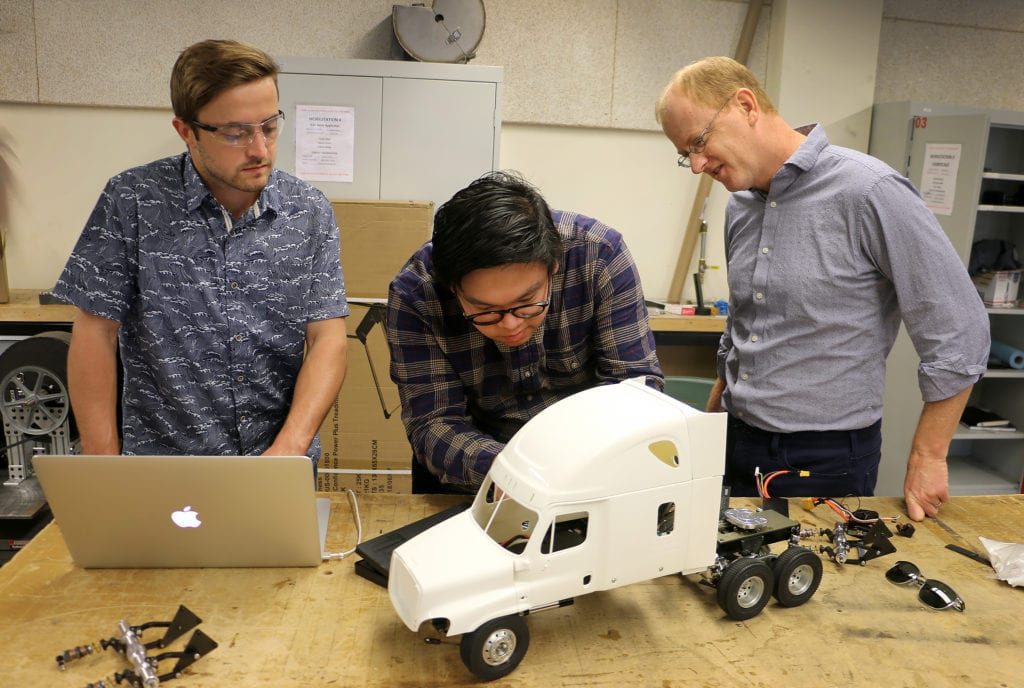A gauntlet of three intense classes — physics, statics and dynamics — presents a grueling test for the majority of freshman and sophomore engineering students at Cal Poly. And while most students studying engineering across the country struggle in those courses, statistics show minority and first-generation students struggle more.
“One of the problems with these courses is there’s a GPA gap of almost .5 when you look at underrepresented minorities or historically marginalized groups and first-generation students,” said mechanical engineering professor Brian Self. “Cal Poly and every college of engineering is working on reducing that gap.”
Self will soon get a chance to concentrate on the problem as he is a part of a coalition of educators from Cal Poly, UC Santa Barbara and Allan Hancock College that received a $1.3 million grant from the California Education Learning Lab to develop and re-imagine online components and courses in science, technology, engineering and mathematics (STEM).
“We are developing concept questions and concept tests for the online component in these courses,” Self said. “In the online component, we’re doing modules to really help students understand physics and mechanics, and importantly, figure out what they understand and what they don’t in all three courses.”
Working with Cal Poly faculty that included mechanical engineering professors Ben Lutz, Eileen Rossman and John Chen, and physics professors Stamatis Vokos, Laura Rios, Geraldine Cochran and Pete Schwartz, Self said their proposal, “The Mechanics of Inclusion and Inclusivity in Mechanics,” also includes creative classroom activities.
“There’s an in-person component that will try to create a more inclusive classroom environment with the use of learning assistants, which are undergraduate students who will come and work through problems,” Self said. “We’ll try to make it a little less rote and less lecturing by the professor to make it more engaging.”
Self said this project, one of six fully-funded projects funded by the Learning Lab to close equity and achievement gaps in STEM, benefits from being based on three campuses.
“Because we have people that teach in physics, statics and dynamics in a mechanics sequence at each school, we can look at student learning longitudinally,” he said. “For students who go through all three of these courses under specific professors, we’ll be able to look at their learning gains in the sequence. With Allan Hancock College as one of our partners, we’ll be able to do some interesting work with the students in those three courses because they have a more diverse population.”
A three-year project, Self said producing videos is also part of the plan to boost inclusivity early in the process.
“We’re developing the materials for an online sequence the students will go through before they even come to class,” he said. “And we’re going to make an introductory video that hopefully motivates the students by highlighting some non-traditional engineers.”
See the California Education Learning Lab for more info.


